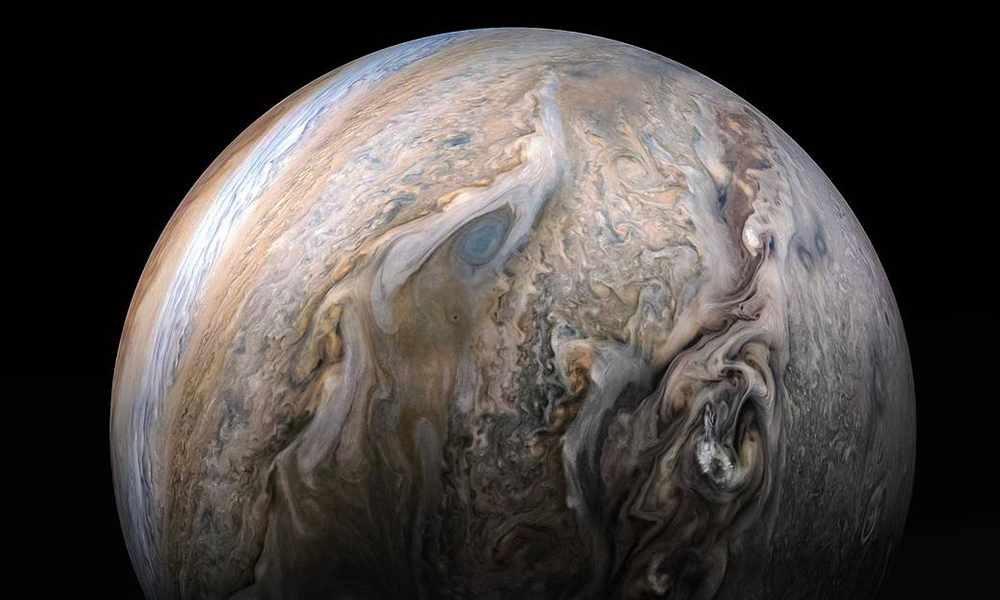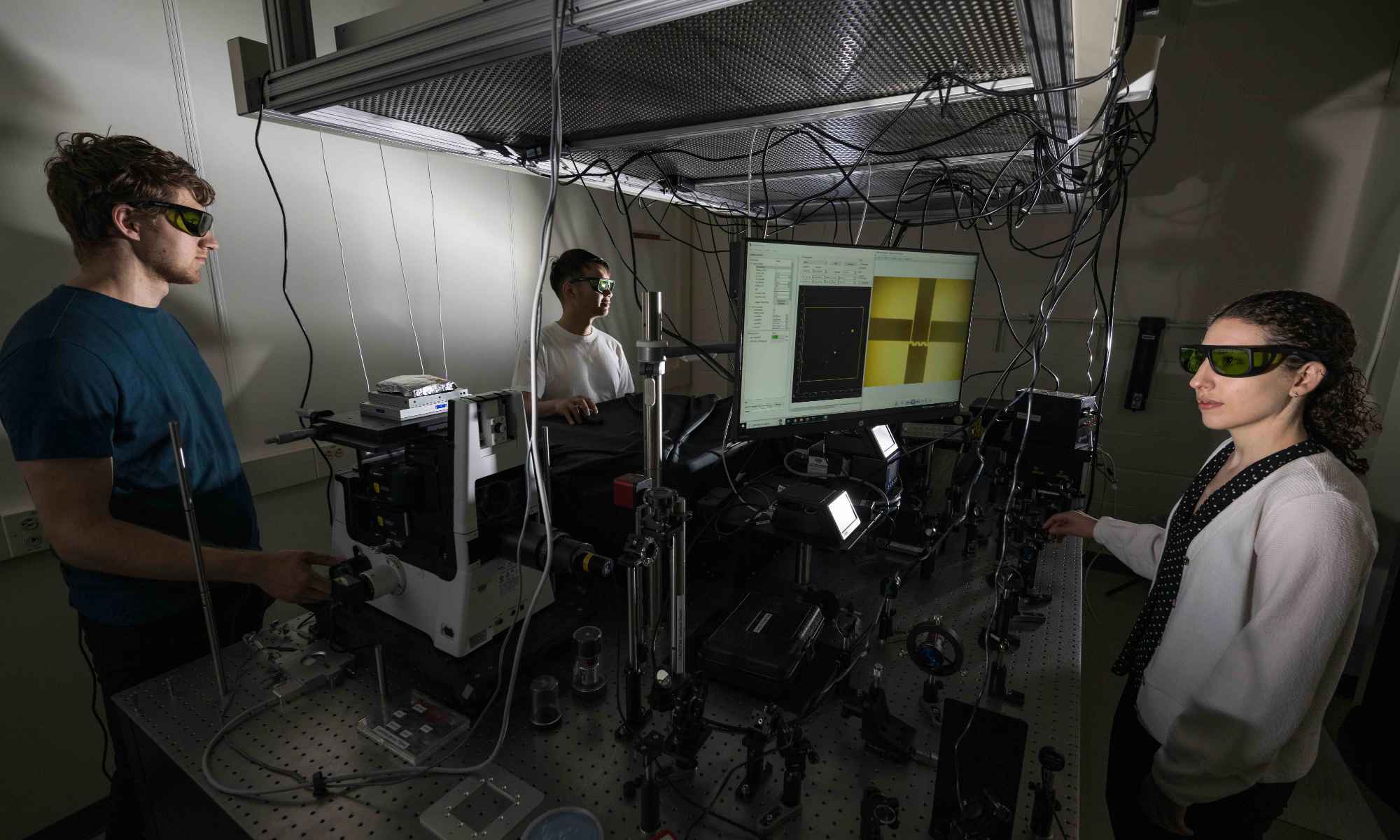The Flash Center for Computational Science offers researchers worldwide access to a computer code that simulates phenomena in astrophysics, high-energy-density science, and fusion research.
UPDATE: New FLASH code expands possibilities for physics experiments (January 6, 2023)
The University of Rochester is the new home of a research center devoted to computer simulations used to advance the understanding of astrophysics, plasma science, high-energy-density physics, and fusion energy.
The Flash Center for Computational Science moved from the University of Chicago to the Department of Physics and Astronomy at Rochester in October 2021. Located in the Bausch and Lomb building on the River Campus, the center encompasses numerous cross-disciplinary, computational physics research projects conducted using the FLASH code. The FLASH code is a publicly available multi-physics code that allows researchers to accurately simulate and model many scientific phenomena—including plasma physics, computational fluid dynamics, high-energy-density physics (HEDP), and fusion energy research—and inform the design and execution of experiments.
“We are thrilled to have the Flash Center and the FLASH code join the University of Rochester research enterprise and family, and we want to thank the University of Chicago for working hand-in-hand with us to facilitate this transfer,” says Stephen Dewhurst. Dewhurst, the vice dean for research at the School of Medicine and Dentistry and associate vice president for health sciences research for the University, is currently serving a one-year appointment as interim vice president for research.
The ‘premiere’ code used at the world’s top laser facilities
Development of the FLASH code began in 1997 when the Flash Center was founded at the University of Chicago. The code, which is continuously updated, is currently used by more than 3,500 scientists across the globe to simulate various physics processes.
The Flash Center fosters joint research projects between national laboratories, industry partners, and academic groups around the world. It also supports training in numerical modeling and code development for graduate students, undergraduate students, and postdoctoral research associates, while continuing to develop and steward the FLASH code itself.
“In the last five years FLASH has become the premiere academic code for designing and interpreting experiments at the world’s largest laser facilities, such the National Ignition Facility at Lawrence Livermore National Laboratory and the Omega Laser Facility at the Laboratory for Laser Energetics (LLE), here at the University of Rochester,” says Michael Campbell, the director of the LLE. “Having the Flash Center and the FLASH code at Rochester significantly strengthens LLE’s position as a unique national resource for research and education in science and technology.”
Petros Tzeferacos, an associate professor of physics and astronomy and a senior scientist at the LLE, serves as the center’s director. Tzeferacos’s research combines theory, numerical modeling with the FLASH code, and laboratory experiments to study fundamental processes in plasma physics and astrophysics, high-energy-density laboratory astrophysics, and fusion energy. Tzeferacos became director of the Flash Center in 2018 after serving for five years as associate director and code group leader, when the center was still housed at the University of Chicago.
“The University of Rochester is a unique place where plasma physics, plasma astrophysics, and high-energy-density science are core research efforts,” Tzeferacos says. “We have in-house computational resources and leverage the high-power computing resources at LLE, the Center for Integrated Research Computing (CIRC), and national supercomputing facilities to perform our numerical studies. We also train the next generation of computational physics and astrophysics scientists in the use and development of simulation codes.”
Research at the Flash Center is funded by the US Department of Energy (DOE) National Nuclear Security Administration (NNSA), the US DOE Office of Science Fusion Energy Sciences, the US DOE Advanced Research Projects Agency, the National Science Foundation, Los Alamos National Laboratory (LANL), Lawrence Livermore National Laboratory (LLNL), and the LLE.
“FLASH is a critically important simulation tool for academic groups engaging with NNSA’s academic programs and performing HEDP research on NNSA facilities,” says Ann J. Satsangi, federal program manager at the NNSA Office of Experimental Sciences. “The Flash Center joining forces with the LLE is a very positive development that promises to significantly contribute to advancing high-energy-density science and the NNSA mission.”
UPDATE: New FLASH code expands possibilities for physics experiments
The Flash Center for Computational Science at the University of Rochester recently announced an exciting milestone: researchers have developed a new version of the FLASH code, the first official update of the code since the FLASH center moved to Rochester from the University of Chicago.
The new version of the code, FLASH v4.7, increases the accuracy of simulations of magnetized plasmas and drastically expands the range of laboratory experiments the code can model.
“This expansion fuels discovery science for thousands of researchers around the world, across application domains, while concurrently enabling the Flash Center to pursue a rich portfolio of research topics at the frontiers of plasma astrophysics, high-energy-density physics, and fusion,” says Petros Tzeferacos, an associate professor of physics and astronomy at Rochester and a senior scientist at the LLE, who serves as the center’s director.
FLASH v4.7 is the culmination of nearly two and a half years of code development, spearheaded by Adam Reyes, the Flash Center code group leader in the Department of Physics and Astronomy, and other Flash Center personnel.
According to Tzeferacos, the development of the FLASH code also draws heavily from the Flash Center’s robust education program that engages Rochester graduate and undergraduate students.
“A key aspect of what we do at the Flash Center is to train the next generation of computational physicists and astrophysicists to develop multi-physics codes like FLASH and perform validated simulations,” Tzeferacos says. “Several of the items in the new FLASH release were developed and verified by our graduate students, who may ultimately use the new capabilities in their graduate research.”
Read more about the new FLASH code release here.
Read more
 Laser-driven experiments provide insights into the formation of the universe
Laser-driven experiments provide insights into the formation of the universe
Using the FLASH code, researchers at the Laboratory for Laser Energetics have captured for the first time in a laboratory setting the process thought to be responsible for generating and sustaining astrophysical magnetic fields.
 Elusive ‘turbulent dynamo’ phenomenon observed at OMEGA laser
Elusive ‘turbulent dynamo’ phenomenon observed at OMEGA laserThe universe is filled with magnetic fields, yet how it got that way has long been a mystery. To explain the universe’s magnetization, scientists proposed the existence of a “turbulent dynamo.” The phenomenon had never before been measured or observed directly—until recently.
 Rochester scientists reveal the limits of machine learning for hydrogen models
Rochester scientists reveal the limits of machine learning for hydrogen models
Research from the Laboratory for Laser Energetics paves the way for more accurate computer models, which are needed to understand the interior of planets and the physical properties of nuclear fusion.




